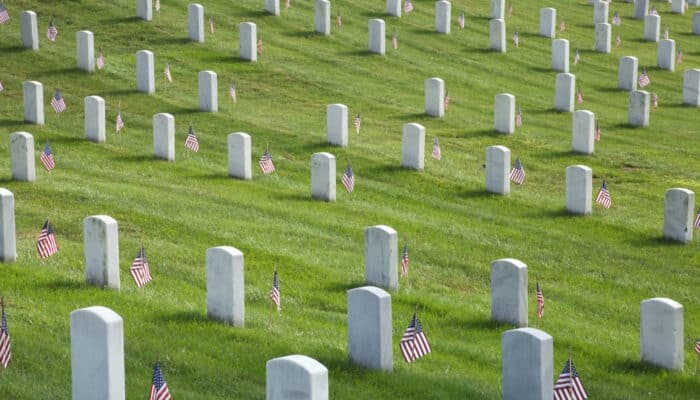Memorial Day was declared a national holiday through an act of Congress in 1971, and its roots date back to the Civil War era, according to the U.S. Department of Veterans’ Affairs. Unlike Veterans Day, Memorial Day honors all military members who have died while serving in the U.S. forces.
Though Memorial Day has evolved over time, it still is a day to honor the nation’s war dead. Veterans Day, however, honors everyone who has served in the U.S. military. It is a solemn occasion that allows the family of the fallen service member, as well as other service members in attendance, to honor their life and service to this country.
Memorial Day is one of eleven federal holidays recognized nationwide by the United States Government. This means all Federal employees are paid even if they receive the day off, and many private-sector businesses give their employees paid time off.
Memorial Day changed from its traditional May 30 date to the last Monday in May. The law took effect at the federal level in 1971.
Veterans Day honors everyone who has served, while Memorial Day is for those who died in military service. Memorial Day is the older of the two holidays and dates to just after the Civil War, 1866, when the town of Waterloo, New York hosted a city-wide “Decoration Day.” Decoration Day only recognized fallen soldiers of the Civil War until World War I. In 1869, the head of an organization of Union veterans, Maj. Gen. John A. Logan, established Decoration Day as a way for the nation to honor the graves of those who died in the Civil War with flowers, according to the U.S. Department of Veterans Affairs. A number of newspaper articles published in 1870 described processions in New York City, among other sites. The stories noted that, aside from Independence Day, there was “no day that calls out the patriotic feelings of our people more than ‘Memorial Day,’” which, the article said, was a national holiday not by any enactment by the legislature but by “the general consent of the people.”
There are debates over which city was the original place of Memorial Day, although the first large observation was held at Arlington National Cemetery for a crowd of about 5,000 in 1868. Some records show that one of the earliest Memorial Day commemorations was organized by a group of formerly enslaved people in Charleston, South Carolina less than a month after the Confederacy surrendered in 1865.
The 1863 cemetery dedication at Gettysburg, Pennsylvania, included a ceremony of commemoration at the graves of dead soldiers. Some have thus claimed that President Abraham Lincoln was the founder of Memorial Day. However, Chicago journalist Lloyd Lewis attempted to make the case that it was Lincoln’s funeral that spurred the soldiers’ graves decorating which followed.
Many cities have claimed to be the first to observe Memorial Day. However, in 2022, the National Cemetery Administration, a division of the Department of Veterans Affairs, credited Mary Ann Williams with originating the “idea of strewing the graves of Civil War soldiers—Union and Confederate” with flowers.
In 1966, President Lyndon Johnson declared Waterloo, New York as the official “birthplace” of the holiday, according to the VA. However, Memorial Day was not an official holiday until 1968.
Congress, in December 2000, passed and President Bill Clinton signed into law “The National Moment of Remembrance Act,” to ensure those who sacrificed their lives for this country were never forgotten.
Consequently, at 3 p.m. local time, Americans are asked to take part in the National Moment of Remembrance, a time to pause in a moment of silence to honor those who have died serving the United States while in the Armed Forces.
On Memorial Day, the flag of the United States is raised to the top of the staff and then solemnly lowered to the half staff position, where it remains only until noon. It is then raised to full staff for the rest of the day. The National Memorial Day Concert takes place on the west lawn of the United States Capitol.
Many people visit cemeteries and memorials on Memorial Day to honor and mourn those who died while serving in the U.S. military. Many volunteers place American flags on the graves of military personnel in national cemeteries. Memorial Day is also considered the unofficial beginning of summer in the United States.
It is estimated that over 1.3 million Americans have paid the ultimate sacrifice for their nation.
One can enjoy their weekend, but they should remember what this holiday is about. Residents of Florida and citizens of the U.S. should be thinking about and honoring those who served our nation and made the ultimate sacrifice as well as their surviving family members who certainly will never forget.
The foregoing is just a brief and general legal and historical overview of Memorial Day.
If you have any additional Questions regarding the foregoing or have any legal issue or concern, please contact the law firm of CASERTA & SPIRITI in Miami Lakes, Florida.

